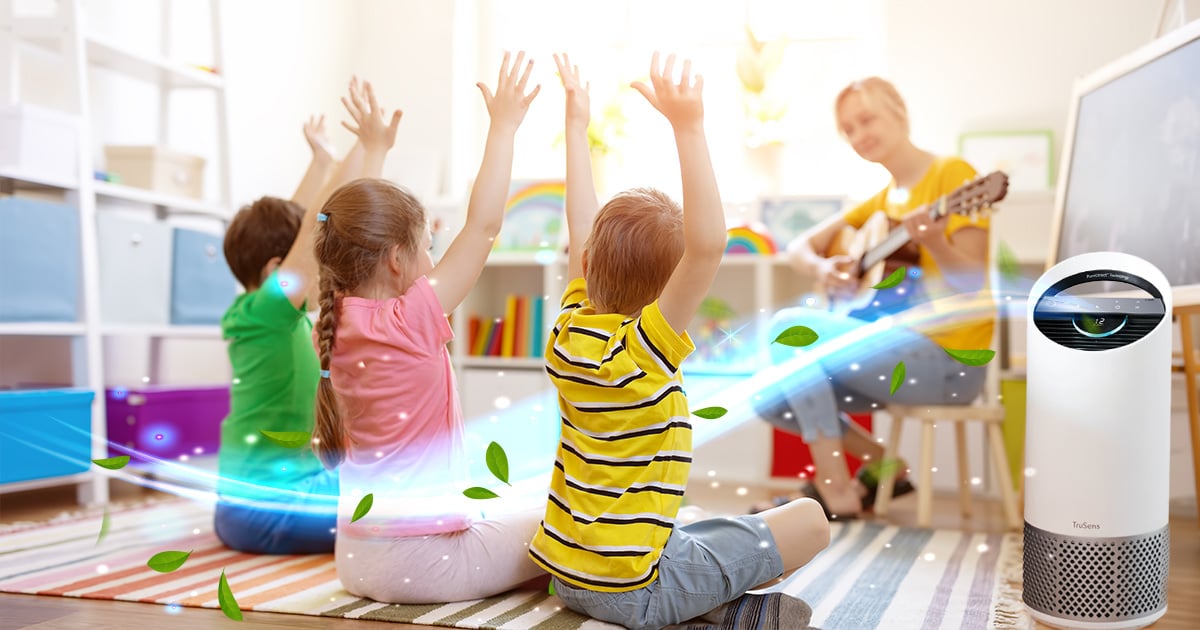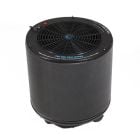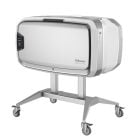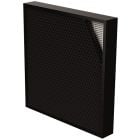Every Classroom Needs an Air Purifier

Estimated Reading Time
2 Minutes
TLDR
Protecting students in school is always top of mind for teachers and administrators. But how can you protect them from smoke coming from a fire that is hundreds or even thousands of miles away? With a classroom air purifier. This article discusses indoor air quality, the challenges faced by teachers, and some of the best air purifiers for classrooms.
Are you looking to improve your classroom’s health and safety? It takes more than hand sanitizer stations and spaced-out desks. There’s another extremely important aspect that affects every breath your students take — indoor air quality, or IAQ. And the best way to improve IAQ is through portable air purifiers for classrooms. But why is IAQ so important, and how can you pick the best air purifier for your classroom? That is what we will help you with today.
Understanding Indoor Air Quality
We all know the basics of keeping a classroom clean: wipe down the desks, sweep the floors, and dust the shelves from time to time. But the air we breathe is just as important —if not more so— than surface cleanliness for keeping everyone healthy and focused.
After all, a variety of air pollutants sneak into our classrooms and affect everyone’s health, including:
- Allergens like pollen and mold spores
- Dust and other irritants
- Germs like bacteria and viruses
- Smoke from fires
- Gasses and VOCs
So, where does indoor air quality come in?
The Significance of Indoor Air Quality
IAQ is a measure of how clean or polluted the air inside a building is. It measures the mix of tiny particles and gasses that we breathe in.
Poor IAQ can lead to a host of health issues, including allergies, asthma, and even long-term respiratory problems. It can even affect your students’ productivity and concentration, as they are distracted by the physical effects on themselves and those around them.
On the other hand, good indoor air quality means fewer of those pollutants we discussed above, which translates to better health and well-being for everyone in the room.
Challenges in Classroom Air Quality.
Various issues make maintaining good IAQ difficult, including:
- Limited ventilation
- Breathing conditions
- Overcrowding
Together, these conditions create the perfect recipe for poor air quality.
If the COVID-19 pandemic has taught us anything, it’s that we can’t afford to put IAQ on the back burner. In fact, protecting the air we breathe has become more important than ever in the post-pandemic era.
Benefits of Air Purifiers
One proven way to combat these challenges is with portable air purifiers for classrooms. They offer various benefits that can improve the health and well-being of your staff and students, including:
- Reduction of allergens and asthma triggers like pollen, dust, pet dander, and mites
- Elimination of germs and viruses
- Improved concentration and learning outcomes
- Fewer absences
- Enhanced teacher and student well-being
- Mitigation of COVID-19 and other virus transmission risks
Types of Air Purifiers
Not all air purifiers are created equal. Each type has its own pros and cons, so the best purifiers for classrooms often combine multiple technologies to clean the air. To start, let’s take a look at the four most common types of air purifiers.
HEPA Filters
HEPA stands for High-Efficiency Particulate Air, and these filters can capture particles as tiny as 0.3 microns. They’re excellent for capturing allergens, dust, and even some bacteria (like the COVID-19 virus). These filters are extremely efficient, effective, and reliable; they are the standard for hospitals and other high-risk facilities. But they’re not great at removing odors and gasses, so a combination filter with carbon would be the best choice if you’re dealing with strong smells.
Activated Carbon Filters
Activated carbon filters absorb pollutants onto their surface, eliminating odors, chemicals, smoke, and VOCs. However, they’re not as effective at capturing small particles like allergens or viruses, so they’re often paired with HEPA filters for comprehensive air purification.
Here are the best air purifiers for classrooms with this filter combo:
UV-C Purifiers
UV-C purifiers use ultraviolet light to kill or inactivate microorganisms. They’re particularly effective against bacteria and viruses, so they’re a great addition during flu season — or, you know, a global pandemic. While they eliminate microorganisms, they don’t remove particles like allergens or dust. So, they’re best used as a complementary feature alongside other filters.
Ionizers
Ionizers emit negatively charged ions that attach to airborne particles and make them heavier, causing them to fall to the ground. They can tackle even the smallest of particles, but there is debate on whether they can ozone as a byproduct, which could be harmful in high concentrations.
Selecting the Right Air Purifier
When you’re ready to invest in quality air for your staff and students, you’ll want to consider these factors when shopping for portable air purifiers for classrooms:
- Filtration type - As discussed above, the best air purifiers for classrooms will have a combination of HEPA and carbon filters, with an added benefit of a UV-C light feature.
- Room size - Models are defined by the square footage they can clean.
- Filtration efficiency - Also called “room changes per hour,” this greatly affects the impact of an air purifier.
- Noise levels - Features like quiet or sleep modes are ideal for classrooms.
- Portability - Will it be stored away at the end of the day, moved to various classrooms, or remain stationary?
- Wall mounting capability - If you have limited floor space or want to move the air purifier to a safe space where it cannot be knocked over, consider models that can be mounted on the walls and ceilings.
- Smart features - If you want to control the air purifier from an app on your phone, then smart features are an added convenience.
- Certifications - CARB, UL, CEL, and other certifications can be found on the best models.
Cost Considerations
Depending on the room size and features you need, you can find portable air purifiers for classrooms starting at under $100. For larger rooms, and those with more robust feature sets needed, you could spend upwards of several thousands of dollars. With such a wide range, anyone can find a great air purifier to help keep their students protected.
The operational costs of air purifiers is mostly found in the filter replacements, which range in price depending on the model, but are often under $50. For high-use areas they may need to be changed out every 3 months, whereas those who use it less often might be able to change them annually.
Air purifiers can pay for themselves quickly in reduced sick absences, reduced need for substitute teachers, and reduced distractions and disruptions during lessons. Improved health and well-being also create a safe learning environment, which leads to better academic performance. And isn’t that the ultimate goal?
So, when you weigh the costs against the benefits, it’s clear that air purifiers are a worthy investment in the future of education.
Quick FAQs
What is the best portable HEPA filter for classrooms?
The best portable HEPA filter for classrooms would ideally be combined with an activated carbon filter and purify air in spaces of at least 800 square feet. It would also be energy-efficient, operate quietly, and include additional features like UV-C technology, user-friendly controls, and smart functions to meet all the needs of educational environments.
Choose Your Classroom’s Air Purifier
Indoor air quality plays a huge role in the health and well-being of students and teachers, affecting everything from concentration to long-term health. With challenges like limited ventilation, increasing wildfires, and the lingering COVID-19 virus, prioritizing air quality in educational settings is more important than ever.
That’s why portable air purifiers for classrooms are so great for schools. After all, better air quality means fewer sick days, improved concentration and learning outcomes, and a happier, healthier learning environment for everyone.
So, are you ready to invest in the health and safety of your classroom?
Or give us a call at 1-800-944-4573 for one-on-one assistance.









